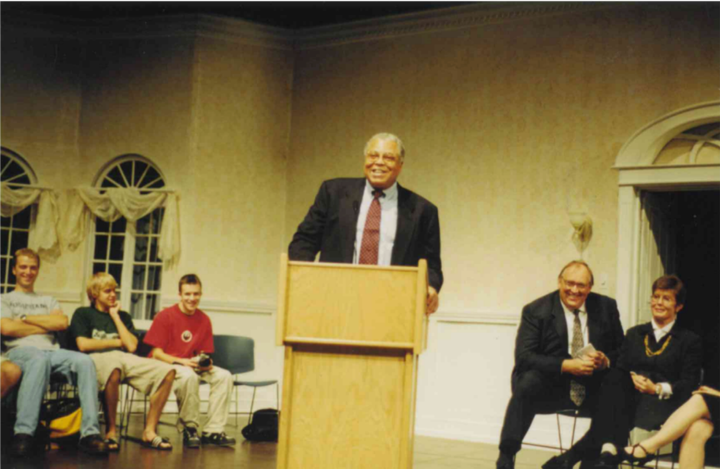Interaction with the Deaf community helps to authenticate program

Authentic experiences propel interpreting program
ERIN MAIROSE
Although only in its sixth year at Augie, the Interpreter Education Program has enrolled almost 50 students from across the country.
Getting students interacting with members of the deaf community the moment they step on campus is one reason why the program is receiving an Excellence and Innovation in Interpreting Education Award.
Each year Sorenson Communications picks a program that goes beyond required standards to give students the real-life experience and knowledge they need to be successful interpreters.
American Sign Language Professor Marlee Dyce said by not having the concept of “it’s always been done this way,” ALS faculty members created the program without an existing framework.
“Because we never had a box to think out of, we automatically created something that was special and different,” Dyce said.
Before the program began in 2010, Dyce said faculty first identified skills the program needed to make students successful in interpreting, before working backwards to develop courses arounds those skills.

The first graduating class was seven students. Now, Dyce visits with students from across the country looking to join the program.
“I do feel a little surprised at first,” Dyce said. “I ask, ‘Really you want to move to South Dakota just for us?’ And they do. And this is the reason that they’re here, so that’s pretty cool.”
One such major is senior Andie Sackreiter from Brenham, Texas. For Sackreiter, the idea of learning interpreting for the deaf community came after watching a friend in high school struggle.
“He was just in mainstream school without an interpreter which was really hard for him as he didn’t have access to communication,” Sackreiter said.
Augustana’s interpreting program is one of 12 accredited programs in the country. Dyce said out of these programs, less than half of them give students experience to regularly interact with members of the deaf community.
“What we’re learning that we do differently is that we have constant exposure to deaf people, and we give our students constant authentic experiences,” Dyce said.
By the time students become upperclassmen, like senior Austin Pelkey, they’re required to do 10 hours of volunteer interpreting at places such as churches, campus events and for groups like Alcoholics Anonymous.
“When you’re an interpreter, you have to not only understand the words that they’re using, but you have to understand the entire concept before you start interpreting it into another language,” Pelkey said.
But getting to that stage takes time.
Being a full immersion program, after reading the syllabus the first day, the entire class is taught in sign language. By junior year, students like Kristen Poepping also have to regularly observe interpreters at work. Just like with spoken languages, deaf people communicate in different ways. And not everyone uses American Sign Language.
Poepping said she was intimidated the first time she interacted with a deaf person in class, but “right off the bat I learned that as long as you tell them ‘Hey I don’t understand,’ they’re more than willing to help you.”
The language lab is another part of the program that differentiates Augustana ASL from other schools. Deaf staff members are available to mentor students 40 hours a week.
And yet, with ample opportunity to become immersed in sign language, Dyce said she’s still surprised how quickly incoming students pick up ASL.
“By midterms [freshman] students are able to have actual hands-on conversations with any deaf person they bump into,” Dyce said. “So it’s pretty cool how quickly they can pick up the language.”



